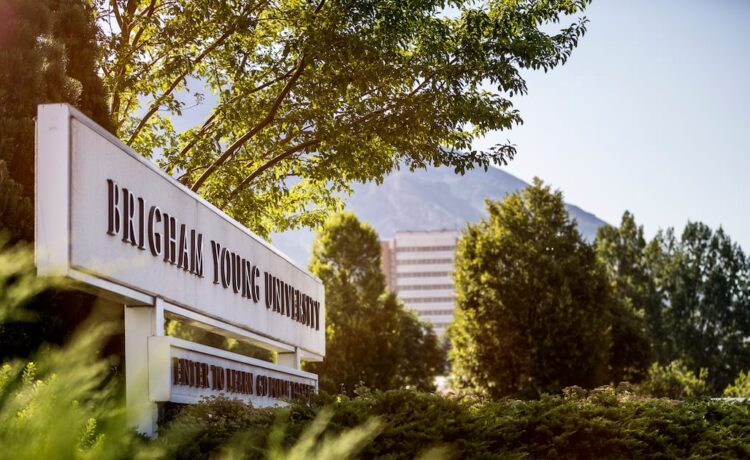Pandemic relief funds rejected by Brigham Young University and other Latter-day Saint schools kept other American college doors open and students enrolled, but now that money is drying up and some private universities are struggling to adjust.
BYU and the other Church Educational System schools sponsored by The Church of Jesus Christ of Latter-day Saints rejected the U.S. government’s direct offer of a third of a billion dollars in federal COVID-19 relief funds in 2020 and 2021.
The church annually gives a total of $1 billion to subsidize each student’s tuition and help with other expenses at BYU, BYU-Idaho, BYU-Hawaii and Ensign College in Salt Lake City. Enrollments at the schools have remained steady.
The church maintained the same level of support through the pandemic, said Elder Clark G. Gilbert, the church commissioner of education and a General Authority Seventy.
“In alignment with the church’s principles of self-reliance, the Church Educational System has been consistent in not accepting any federal stimulus funds,” he said. “By relying upon our own funding and practicing ongoing frugality, we have been able to navigate the expenses required to operate the church schools and entities.”
That puts BYU and its sister schools on safer footing than many private American colleges and universities who have been using the pandemic funding to negotiate a difficult half decade marked by rising costs and declining enrollment.
In fact, BYU and BYU-Hawaii earned A+ marks and BYU-Idaho received an A- from Forbes two weeks ago when the publication released its 2024 private college financial grades. That puts them all in the top 10% of nearly 900 schools on the Forbes list.
For others, the relief funds “really put a Band-Aid on some inherent funding issues that we were struggling with,” East Central College (Missouri) President Jon Bauer said in an article published by Inside Higher Ed.
A credit ratings expert shared a similar sentiment with Forbes.
“That period where federal funds were coming in and offsetting some of the pandemic financial pressures was artificially covering up some of the challenges that a certain part of the sector were facing,” said Susan Shaffer, vice president and senior credit officer at the ratings agency Moody’s.
Now bills are starting to come due after the spigot shut off. Institutions had until June 30 to spend any remaining pandemic relief funds, IHE reported.
“That Band-Aid is removed, but the condition is still there,” East Central’s Bauer said. “So, it’s back to reality for us.”
Many private schools are worried about a double whammy. They are bracing for an expected demographic cliff in 2026, according to University Business. The number of college-age Americans will be smaller that fall.
University Business reported that “58% of private colleges don’t have a long-term financial solution that isn’t wholly dependent on their year-to-year tuition dollars — a poor asset to depend on as the number of high school students drops.”
The Forbes grades were based on information from the National Center for Education Statistics. Endowment assets were the most important factor in Forbes’ methodology for determining a school’s long-term financial health.
BYU ranked second in the grading behind the University of Pennsylvania. BYU-Idaho was fourth, just behind Claremont McKenna College and directly ahead of Cornell and Yale.
The Deseret News reported in 2021 that the government had allocated the four Latter-day Saint CES schools $333,408,468 during the three rounds of pandemic stimulus funding:
- BYU total: $171,163,549
- BYU-Idaho total: $141,670,272
- BYU-Hawaii total: $12,475,662
- Ensign College total: $8,098,985
The four schools lost significant money during the pandemic, when they shut down briefly during March 2020. Despite the losses, the church schools repeatedly said they would forgo the federal funding because of the church’s principles of self-reliance.
More than 18 million college students received federal COVID-19 emergency funds in 2020 and 2021, the Education Department reported.
Schools said the money was vital for under-resourced institutions and students, with 90% of institutions reporting that the emergency funds kept at-risk students enrolled. Students received an average of $1,507 in emergency aid, department officials said, according to IHE.
Pandemic relief funds were a shock absorber for schools facing lost revenue and enrollment declines. The small Notre Dame College, a private Roman Catholic school in Ohio with 1,300 students, closed its doors on March 1.
“Like many small higher education institutions across the country, NDC has faced long-standing challenges related to declining enrollment, a shrinking pool of college-aged students, rising costs and significant debt,” the college said in a statement.
“The story of the pandemic, (which) would have been even grimmer for our colleges, has not been for these funds,” said David Baime, senior vice president for government relations for the American Association of Community Colleges, according to IHE.
The private Latter-day Saint schools determined they could assist their students and weather the financial storm without help from the federal funding.
BYU, for example, created its own relief fund to help students who attended school from January to August 2020 with food and housing needs. BYU also provided what essentially were expanded tuition deadlines to help students who struggled financially.















